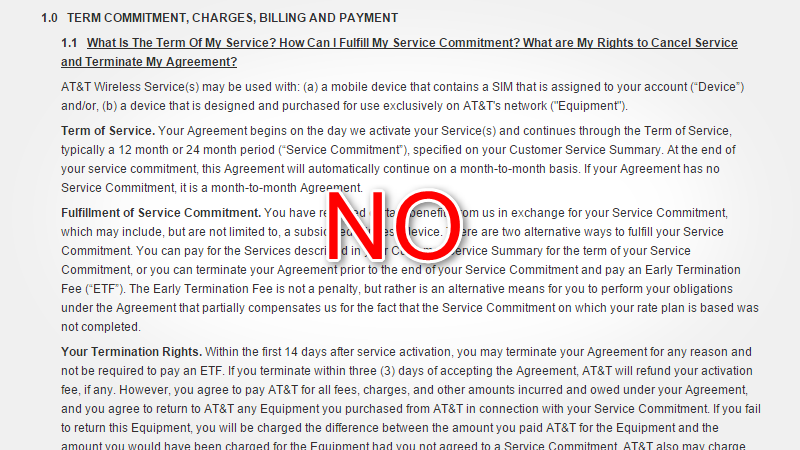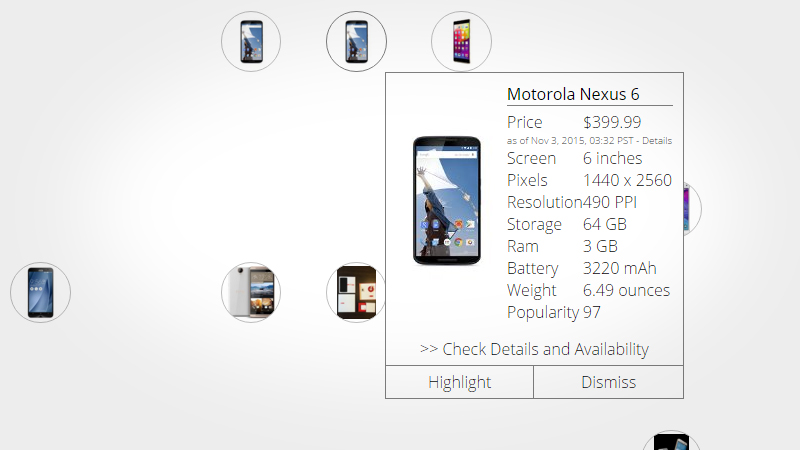For years, the only decent way to buy a phone was from your carrier. Those days are behind us. Now, in many circumstances, it’s just as easy and usually better to buy your phone outright and ditch the contracts forever.
Pile of phones image via Shutterstock
Imagine if every time you wanted to buy a laptop, you first had to go to iiNet and ask which devices it’s approved. Then, you had to promise to stay with iiNet for two years just to buy that laptop. No one would ever agree to conditions like that today. Instead, you buy your laptop and assume you can connect it to whatever network you damn well please. Buying mobile phones hasn’t always worked that way, but it can.
Two-Year Contracts Were a Ripoff, and Their Replacements Aren’t Much Better

We still buy phones from carriers partly because we’re used to getting ripped off. Multi-year contracts existed long before post-paid mobile service. When mobile phones first started to become common, the ability to make a phone call from anywhere vastly outweighed the cost of signing a contract. Carriers offered to front the phone and the service, in exchange for a promise that the customer would stay with the carrier for two years. Seemed like an OK deal for what was little more than a glorified utility.
Except it wasn’t. Subsidized hardware meant that customers never really knew what their phone or services really cost. For example, today, you can go to most carriers and see what a phone, texting, and data service would cost, and see phone prices separately. Depending on the phone you want, buying outright could save $15-30 per month. In the old days, the cost of phones was lumped in with your service. Carriers never defined how much of your bill went toward hardware, and buying a cheaper phone didn’t lower your bill. Worse yet, if you paid enough to cover the cost of a phone and then didn’t upgrade, your bill wouldn’t go down. You’d just keep paying to subsidise other people’s phones.
You couldn’t leave your carrier if your service ended up sucking, or if you moved to a new place with bad signal. You either had to pony up tons of money to change carriers, or deal with crap service until your contract was up. We gave up the ability to comparison shop for our hardware and service. Unsurprisingly, when competition flies out the window, it results in a raw deal for customers.
Nowadays, carriers have started to change their ways. Subsidising phones made sense when customers didn’t know that most phones were cheap. Now, phones are expensive and, more importantly, customers want to upgrade more often. So, carriers have created new, more complicated phone-buying plans. Some are little more than monthly payment plans. Others are designed to obscure the fact that upgrading costs more in the long run. Even when they don’t suck, they’re rarely worth the other trade-offs. You can use a carrier to finance a phone, but you lose the freedom to leave your carrier.
In most cases, however, there’s little reason to buy from a carrier anymore. Manufacturers and retailers already offer plenty of ways to finance a phone without paying interest, if you need to spread out the cost. Most carriers have cheaper plans if you’re not buying a phone through them. Plus, if you buy direct, you can shop around for better prices on hardware and you can leave your carrier whenever you need to. You can even sell your phones and upgrade quicker without dealing with how it might change your carrier plan.
Carrier-Specific Phones Are Bad for Consumers
Last week, Motorola announced a new phone with a shatterproof screen. That’s pretty awesome. If you’ve had a cracked screen before and want to get a new phone that can’t be broken, you might be interested in this phone. That is, if you’re an American on Verizon. If you aren’t on Verizon, you’re out of luck – it’s a carrier exclusive.
Carrier exclusives on phones or features aren’t as common as they used to be, but they still split the phone market. Despite the fact that shatterproof screens, large batteries, and mobile payment systems have nothing to do with carriers, you can still find yourself missing out because of which dumb pipe is carrying your data.
Of course, none of that compares to the damage that carriers do to software updates, particularly for Android phones. HTC gave us an insight into what the update process is like for their devices. Due to carrier customisations, bundled apps, extra features, and other changes that most people likely don’t want or need, carriers can add 3-4 extra phases to the already lengthy update process. In a kitchen with too many cooks to begin with, adding carriers is like inviting your cousin who took a culinary class once to join the team.
In some cases, this results in updates taking many months longer than they need to. In other cases, it leads to no updates at all. When announcing its Android Marshmallow plans, Motorola outright abandoned the AT&T and Verizon variants of the 2014 Moto X in the US. On the one hand, that’s kind of a dick move on Motorola’s part. On the other hand, the 2014 Pure Edition (read: carrier agnostic version of the same damn phone) could be activated on AT&T, so there was no reason to have that particular carrier variant begin with. To further drive the point home, the 2015 version of the Moto X Pure Edition can be activated on Verizon. That means there are exactly zero reasons left to buy the carrier version, and nothing but downsides for doing so.
Buying Directly Isn’t Always Possible, But It’s Getting Easier

In an ideal world, you could go online, find a phone you like, order it, then pick a carrier. Unfortunately, we don’t live in that world yet, but we are getting closer. Many phones — including the iPhone, Motorola’s flagships, the Nexus line, and many others — offer devices that work on all networks. Apple’s new financing plan even allows users to pay off their phones over time without being bound to a carrier for two years.
There are still some roadblocks, though. As a consumer, it’s hard to know which phones will work on which carriers. You can buy an iPhone today and be reasonably sure that you can activate it on any carrier in Australia. You can’t say the same thing about every phone. Sometimes there are multiple variants of the same handset, each with carrier-specific radios. Other times one model holds the radios for all carriers. It takes some research to figure out which one, and if you aren’t tech-savvy, it’s easy to get confused and buy the wrong phone.
That being said, it’s getting easier. Some brick-and-mortar stores may also be willing to help you find the right handset (though their salespeople are likely instructed to guide you towards carrier contracts). It’s still a bit of a hassle, but it’s a process that works for an increasing number of great phones.
Cutting out the carrier middle-man isn’t going to be feasible for every single person, but it’s at least time to start trying. You and everyone else are better off if buying a phone had nothing to do with picking a carrier. We already see glimpses of how this could work. Companies like Apple, Motorola, and Google all sell handsets directly to consumers that work on all carriers, get faster, more reliable updates, and don’t hold features hostage based on which carrier you use. This could be the way it is for everyone. In fact, it should be.

Comments
7 responses to “Buying Phones From Carriers Sucks, And It’s Time For Us To Stop”
Plans for $80, with Optus or Vodafone, include unlimited talk and text with 8GB data. The plan also includes most phones with no extra cost. To get 8GB data on Prepaid, you’d spend around $50-$60. Let’s just say $55. Add a Samsung Galaxy S6, $850. 55×24+850=2170. Whereas, 80×24=1920. As of now, Optus has 20GB data for $100 with almost all phones for free. $5 per GB, and a $1200 phone…
The plan is cheaper. It’s not always the case, but majority of the time the plan is either cheaper or the same price. And it makes more sense to own a phone for 2 years rather then changing every year. What’s the difference between a iPhone 6 and 6S? Is it worth the $1200 price tag?
don’t forget you still can get money back from selling the iphone 6 😀
I keep mine for 2 years but i am buying it outright… no locked in contract.. i find it cheaper in the long run for 2 years.
Heck last phone I brought via a plan was an old HTC Magic through Vodafone.
I’m not a prolific updater either having rocked a Samsung S2 until earlier this year when I moved to an S5…and that’s only because the S2 died. Both phones I brought outright. Wife does the same.
“For years, the only decent way to buy a phone was from your carrier. ”
Or you could have had some self discipline, and simply saved up. Or stopped buying overpriced, overhyped handsets, that have minimal improvements but a $1000 price tag.
If you want to have the latest toys, but don’t have the income to support your habit, then stop playing that game.
In the ‘smartphone era’ I had the original Samsung S1 for about 4 years until I picked up a Nexus 4 for $160 off Kogan a few years back, still works a treat. It’s now my ‘backup’ phone because my sister handed me down her Samsung S4 (has better camera and expandable memory) which I’ve got running CyanogenMod. Not interested in dropping $800+ on a phone every other year and a $30 prepaid these days has plenty of call and data inclusions. Save a fortune!
Not stopping any time soon, since the hardware is subsidised and $10/mo for a upper middle range handset is unbeatable.
I agree with this article, its much better value to buy a phone outright then choose your provider. Go prepaid if the provider retracts your “plan” or if you find a better deal you can switch anytime.